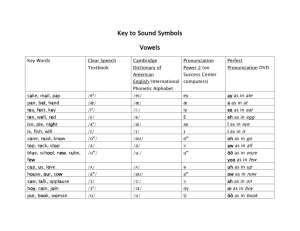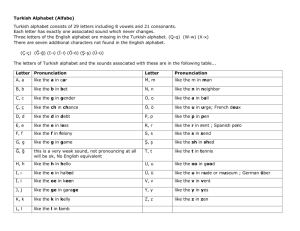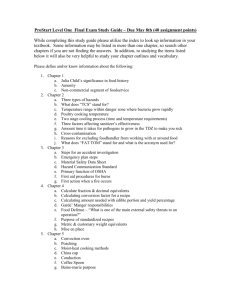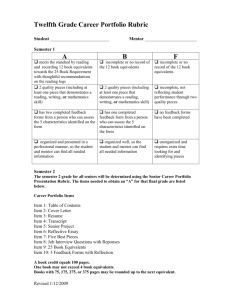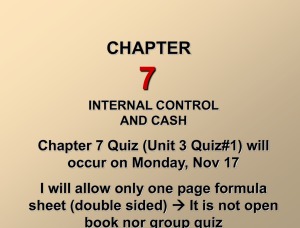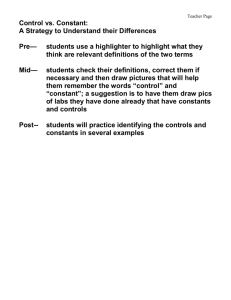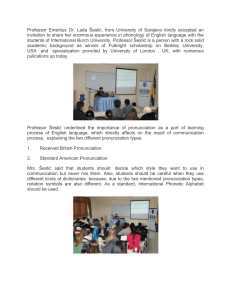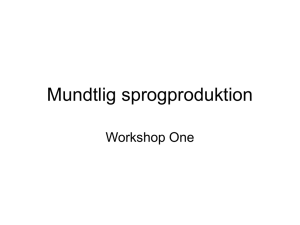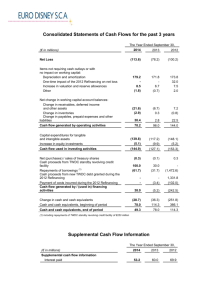The Languages of Limited Diffusion Work Group, part of the Home
advertisement
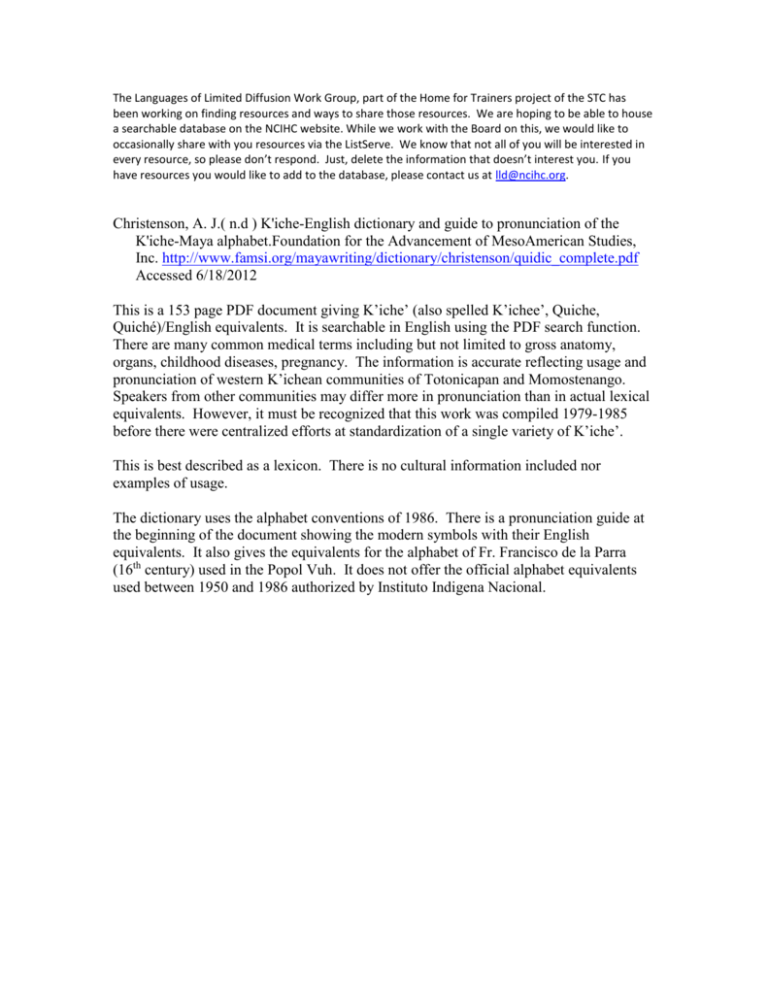
The Languages of Limited Diffusion Work Group, part of the Home for Trainers project of the STC has been working on finding resources and ways to share those resources. We are hoping to be able to house a searchable database on the NCIHC website. While we work with the Board on this, we would like to occasionally share with you resources via the ListServe. We know that not all of you will be interested in every resource, so please don’t respond. Just, delete the information that doesn’t interest you. If you have resources you would like to add to the database, please contact us at lld@ncihc.org. Christenson, A. J.( n.d ) K'iche-English dictionary and guide to pronunciation of the K'iche-Maya alphabet.Foundation for the Advancement of MesoAmerican Studies, Inc. http://www.famsi.org/mayawriting/dictionary/christenson/quidic_complete.pdf Accessed 6/18/2012 This is a 153 page PDF document giving K’iche’ (also spelled K’ichee’, Quiche, Quiché)/English equivalents. It is searchable in English using the PDF search function. There are many common medical terms including but not limited to gross anatomy, organs, childhood diseases, pregnancy. The information is accurate reflecting usage and pronunciation of western K’ichean communities of Totonicapan and Momostenango. Speakers from other communities may differ more in pronunciation than in actual lexical equivalents. However, it must be recognized that this work was compiled 1979-1985 before there were centralized efforts at standardization of a single variety of K’iche’. This is best described as a lexicon. There is no cultural information included nor examples of usage. The dictionary uses the alphabet conventions of 1986. There is a pronunciation guide at the beginning of the document showing the modern symbols with their English equivalents. It also gives the equivalents for the alphabet of Fr. Francisco de la Parra (16th century) used in the Popol Vuh. It does not offer the official alphabet equivalents used between 1950 and 1986 authorized by Instituto Indigena Nacional.
